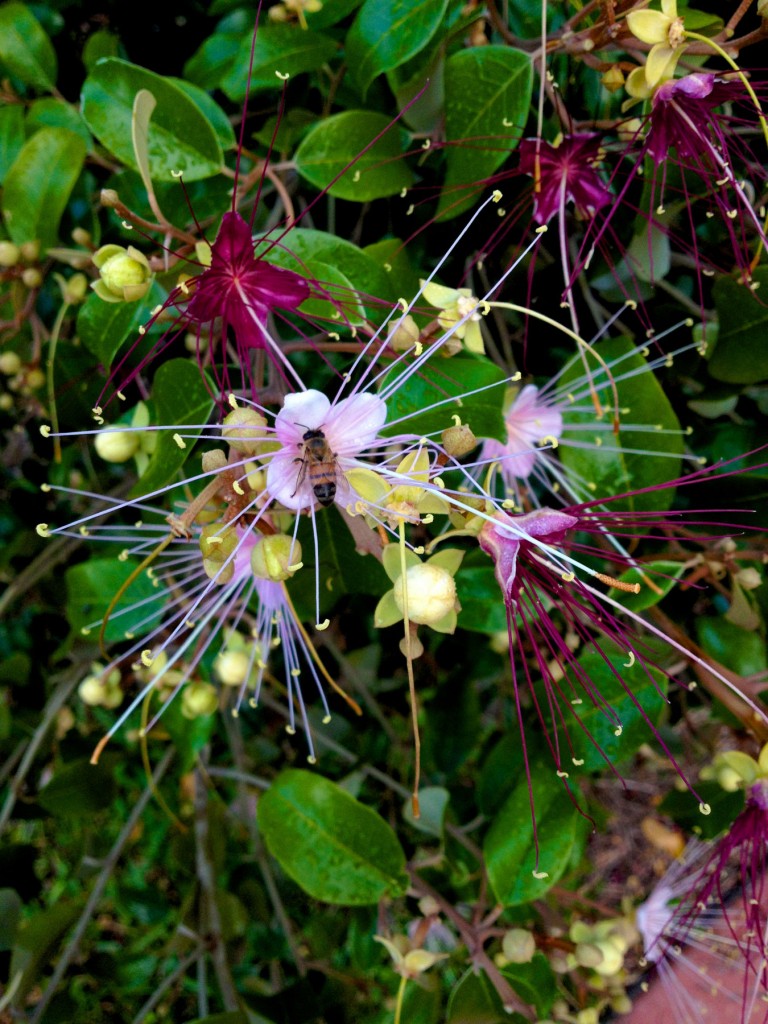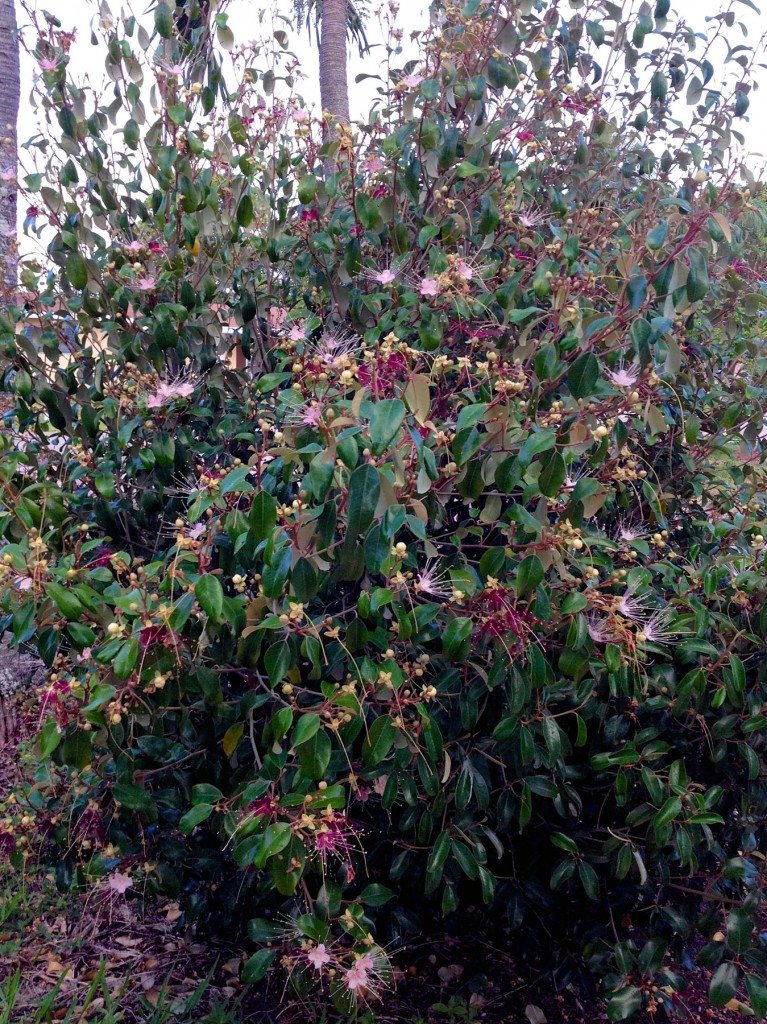Back in April I called my native landscape guru, Melissa McGaughey, because I wanted her advice on some of the things going on around the yard. One of my main concerns was the Jamaica caper in the front yard. It was growing fairly bushy, with lots of what looked like competing leaders, etc. I’m used to it having a more pyramidal shape. When she came by, practically the first words out of her mouth were “that’s the best specimen you have in your yard; I wouldn’t touch it!”
She pointed out that it was just about to enter the budding/flowering season and that if I trimmed it now, I’d miss out on all the blooms. I took her advice and kept my trimmers occupied elsewhere in the yard. And now I’m very glad I did.

The whole plant is flowering all over the place; it’s a bit hard to figure out how to capture the impact; here’s the best I’ve been able to do so far:

The flowers are white when they first break open their enclosing buds, and they turn purple as the sun works on them. The bees are attracted to both the old and the new flowers.
According to Dan Austin, the genus name Capparis comes from the Greek, Latin, and Arabic names for head (káppari, capparis, and kabar, respectively), because the buds resemble heads. Linnaeus apparently enjoyed ribald taxonomic names; he designated this species Capparis cynophallophora, the caper that bears a dog’s penis, because the fruit pods are long, red, and twisted. The fruits appear, naturally enough, after the flowering is done, so this plant puts on a summertime show!

1 thought on “Backyard plant: Jamaica caper. Or, flowers attract bees”